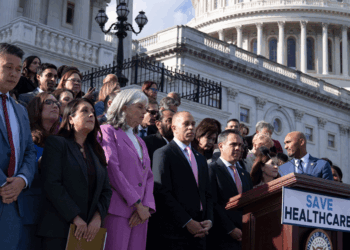When Israel and Hamas agreed to a ceasefire in January 2025, on the last day of the Biden administration, President Joe Biden demanded credit. “This is the exact framework of the deal I proposed back in May. Exact,” he said. Of course, that raises the question—if the deal was on the table earlier, why didn’t Biden secure it then?
That ceasefire fell apart after only two months. Seven bloody months later, the Trump administration has finally brokered a new one. President Donald Trump, like Biden before him, wants the credit. “BLESSED ARE THE PEACEMAKERS!” he declared in his announcement of the ceasefire, waxing biblical. (Trump also, bizarrely, tried to credit his tariff policy for the truce.) But like Biden before him, Trump deserves scrutiny for the violence that dragged on when a deal was already on the table.
The basic formula has stayed the same. Israel and Hamas exchange hostages and prisoners. The Israeli army leaves Gaza, and a new Palestinian governing authority takes over from Hamas, which will have to disarm. Although the full details are not public yet (and may not even be finalized as of this morning), this ceasefire will be divided into phases, as the January one was. Each phase will be negotiated while the prior phase is ongoing.
The January ceasefire broke down during phase one, the first set of hostage and prisoner exchanges. Israeli Prime Minister Benjamin Netanyahu refused to begin negotiations for phase two and added new conditions. Hamas held a series of humiliating “ceremonies” for the release of hostages, including the bodies of the Bibas children who died in captivity.
Trump played spoiler to his own peace efforts at several points. He proposed a plan to have the U.S. take over Gaza and empty out the population. And, apparently incensed by the Bibas case, Trump endorsed an Israeli reinvasion of Gaza.
The next few months became a whirlwind of violence across the Middle East, with the U.S. smack in the middle. Trump attacked Yemen, then quickly withdrew after it turned out to be costly and pointless. The administration supported a new quasi-private aid effort in Gaza, guarded by American paramilitaries, that turned into a deathtrap.
And Trump green-lit an Israeli attack on Iran a few days before U.S. negotiators were scheduled to meet their Iranian counterparts. He demanded “unconditional surrender,” threw U.S. forces into the mix, then took credit for a ceasefire after 12 days of fighting.
These overlapping wars cost the people of the region thousands of lives, and the American taxpayer billions of dollars. Twelve days of war with Iran alone burned through a quarter of America’s stock of high-altitude missile interceptors.
Hawks can point to a few gains made over the past few months, such as the partial destruction of Iranian nuclear sites and more favorable sequencing of the hostage releases for Israel. But these were all gains that could have been achieved at the negotiating table. Iran was ready to negotiate away its nuclear program. All captives would already be back home in Israel had phase two of the January 2025 ceasefire been allowed to proceed.
During talks to salvage that ceasefire, the Trump administration reportedly took out language from the draft peace proposal that would have had Hamas step down from power.
The most likely consequence of U.S. interventions is more U.S. intervention. Although Vice President J.D. Vance tried to portray the attack on Iran as a decisive one-off strike that avoided “protracted conflict,” he is alone in that assessment. Israeli leaders, Iranian leaders, and Trump himself have all publicly predicted another round of war.
Even the publicly released U.S. postwar plan calls for an international organization, chaired by Trump, to rule Gaza before leading to “a credible pathway to Palestinian self-determination and statehood.”
Rather than accepting international rule, Hamas said that it is willing to “hand over the administration of the Gaza Strip to a Palestinian body of independents” after reaching a “Palestinian national consensus.” On the other hand, Netanyahu said, “it’s not written in the agreement. We said we would strongly oppose a Palestinian state.” In other words, the U.S. is committed to enforcing a peace agreement with a glaring contradiction.
In a Wednesday night interview, Trump said that the ceasefire “is more than Gaza. This is peace in the Middle East, an incredible thing.”
However, Amit Segal, an Israeli journalist close to Netanyahu, predicted that the ceasefire would be even less than ending the war in Gaza. “There’s no phase two. That’s clear to everyone, right? Phase two might happen someday, but it’s unrelated to what’s just been signed,” Segal wrote on social media. “This isn’t peace, and these are bitter enemies, still on their knees,” he concluded.
At the very release, a return of the hostages and an end to bombing is a welcome relief for everyone, and Trump deserves some credit for finally forcing that outcome. But on the other side of the ledger sit the thousands dead—and the prospect that the U.S. will be further embroiled in a conflict that it could have just walked away from.

















